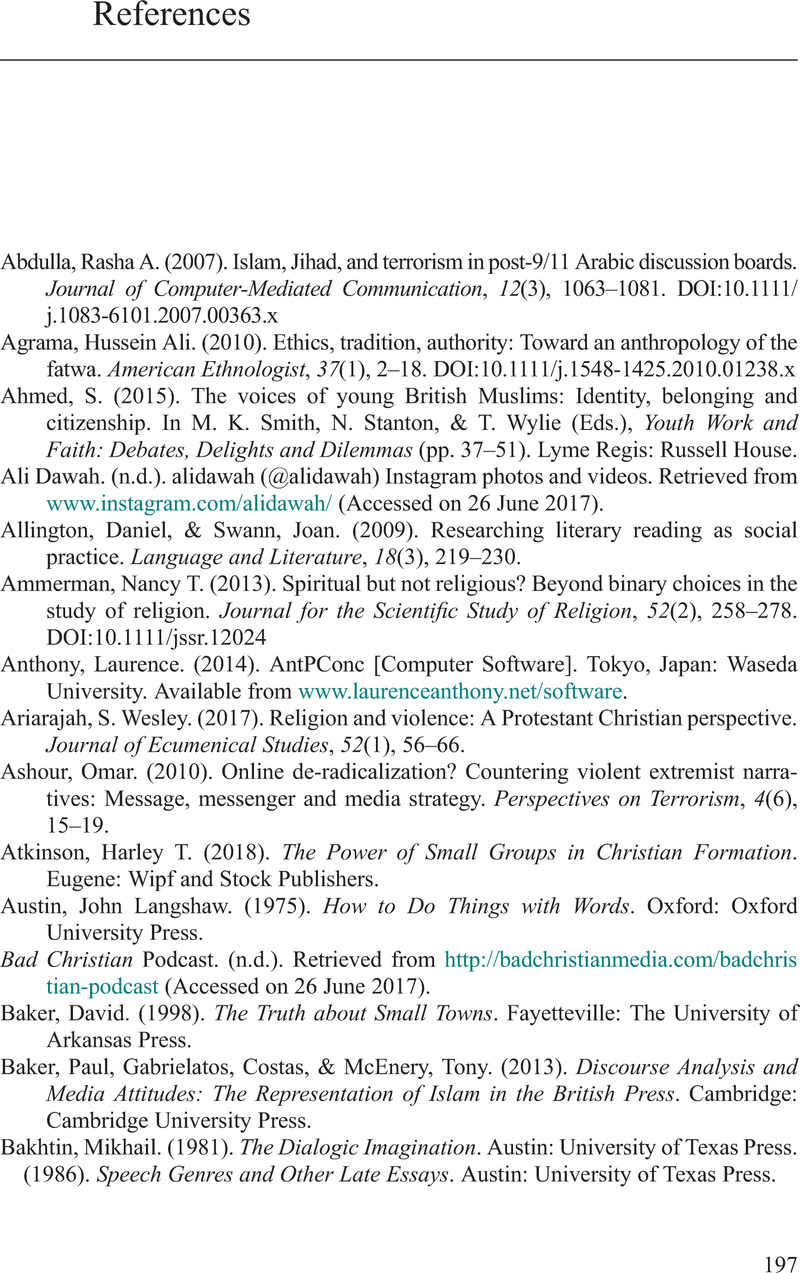Book contents
- Talk about Faith
- Frontispiece
- Talk about Faith
- Copyright page
- Contents
- Acknowledgements
- 1 Talk about Faith in Context
- 2 Religious Discourse as Data
- 3 Naming, Changing, and Contemporary Contexts
- 4 Inspiration, Authority, and Interpretation
- 5 Living Belief and Practice
- 6 Conclusion: The Future of Religious Discourse
- Appendix
- References
- Index Key Concepts, Terms, and People
- References
References
Published online by Cambridge University Press: 26 January 2021
- Talk about Faith
- Frontispiece
- Talk about Faith
- Copyright page
- Contents
- Acknowledgements
- 1 Talk about Faith in Context
- 2 Religious Discourse as Data
- 3 Naming, Changing, and Contemporary Contexts
- 4 Inspiration, Authority, and Interpretation
- 5 Living Belief and Practice
- 6 Conclusion: The Future of Religious Discourse
- Appendix
- References
- Index Key Concepts, Terms, and People
- References
Summary

- Type
- Chapter
- Information
- Talk about FaithHow Debate and Conversation Shape Belief, pp. 197 - 209Publisher: Cambridge University PressPrint publication year: 2021



